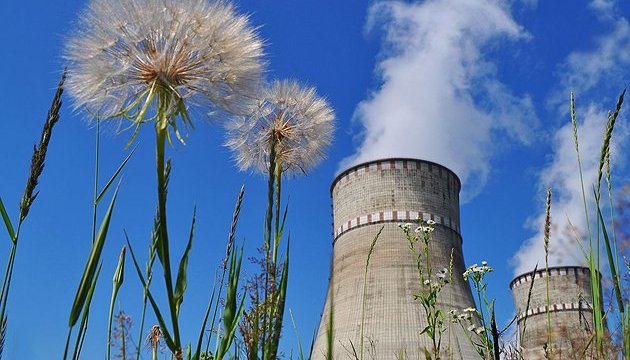УДК 519.6 : 504.064 • Issue 4 (32) / 2020 • 86-95 pages
Popov O., Artemchuk V., Iatsyshyn A., Kovach V., Iatsyshyn An., Turevych A., Kutsenko V.
Popov O., D.Sc.(Tech.), senior research fellow, State Institution “The Institute of Environmental Geochemistry of National Academy of Sciences of Ukraine”, ORCID: 0000-0002-5065-3822, sasha.popov1982@gmail.com
Artemchuk V., Ph.D., senior research fellow, G.E. Pukhov Institute for Modelling in Energy Engineering of NAS of Ukraine, ORCID: 0000-0001-8819-4564, ak24avo@gmail.com
Iatsyshyn A., D.Sc.(Tech.), senior research fellow, State Institution “The Institute of Environmental Geochemistry of National Academy of Sciences of Ukraine”, ORCID: 0000-0001-5508-7017, iatsyshyn.andriy@gmail.com
Kovach V., Ph.D., National Aviation University, ORCID: 0000-0002-1014-8979, valeriiakovach@gmail.com
Iatsyshyn An., Ph.D., senior research fellow, State Institution “The Institute of Environmental Geochemistry of National Academy of Sciences of Ukraine”, ORCID: 0000-0001-8011-5956, anna13.00.10@gmail.com
Turevych A., engineer of the 1-st cat., State Institution “The Institute of Environmental Geochemistry of National Academy of Sciences of Ukraine”, ORCID: 0000-0002-8435-3166, ognetyr@gmail.com
Kutsenko V., junior research worker, State Institution “The Institute of Environmental Geochemistry of National Academy of Sciences of Ukraine”, ORCID: 0000-0002-0577-2056, kuts.vo@gmail.com
Abstract
Network of air pollution monitoring stations in Ukraine was built in the 1970s in accordance with the standards of the former USSR. Their configuration was not revised. During this period there were many changes in economy, industry, transport infrastructure, climatic conditions. It led to radical redistribution of technogenic load on air of Ukraine. Therefore, the existing network of posts today is no longer optimal. It does not allow to see real picture of pollution. This, in turn, does not make possible to make effective decisions on air quality management and public health risk in urban areas. This situation does not meet the pan-European requirements that Ukraine should comply with the Partnership and Cooperation Agreement between the European Union, the Member States and Ukraine. The adopted normative legal acts of Ukraine that one of the prior tasks of the existing air monitoring system development is theoretical substantiation and proposals preparation of optimized schemes for construction and operation of observation networks according to European requirements and standards. Therefore, development of mathematical tools for optimization problem solution of stationary points placement for observation of atmospheric pollution at technogenically loaded territories is an urgent scientific problem. Comparative analysis of different approaches to determining spatial configuration of the air monitoring network was identified. Their main shortcomings are identified. It makes almost impossible to use them in today’s Ukraine. Mathematical formalization of optimization problem solution of stationary points placement for observation of atmospheric pollution at technogenically loaded territories is carried out. From the point of view of optimization theory, the obtained problem is dynamic, nonlinear, deterministic and discrete on a nonconvex domain. Due to considerable complexity of the problem, its solution (finding the optimal solution) is possible only by the method of complete search. However, application of this method is complicated due to the very large number of computational operations for large zones and agglomerations. So, there is a need to use new optimization algorithms. Two algorithms for optimization problem solving were developed. They are based on combination of greedy algorithm and complete search method. Testing of these algorithms (on the example of data from Kyiv) showed that they allow to obtain problem solution (close to optimal) much faster than the method of complete search.
Key words: atmospheric air, monitoring network, stationary observation points, placement optimization, computational.
Article
Reference
- RD 52.04.186–89 Rukovodstvo po kontrolyu zagryazneniya atmosfery. http://docs.cntd.ru/document/1200036406
- Zakon Ukrayiny vid 28.02.2019 № 2697-VIII «Pro Osnovni zasady (stratehiyu) derzhavnoyi ekolohichnoyi polityky Ukrayiny na period do 2030 roku». https://zakon.rada.gov.ua/laws/show/2697-19#Text
- Postanova Kabinetu Ministriv Ukrayiny vid 5 hrudnya 2007 r. № 1376 «Pro zatverdzhennya Derzhavnoyi tsilʹovoyi ekolohichnoyi prohramy provedennya monitorynhu navkolyshnʹoho pryrodnoho seredovyshcha». https://zakon.rada.gov.ua/laws/show/1376-2007-%D0%BF#Text
- Аrtemchuk, V.O. (2011). The thesis of dissertation for a Candidate’s degree in Technical Sciences, Kyiv, UA, 20 p.
- Kameneva, I.P, Iatsyshyn, A.V., Аrtemchuk, V.O. and Popov, О.О. (2011). Eastern-European Journal of Enterprise Technologies. Vol. 3/4(51), Kyiv, UA, pp. 7-11.
- Iatsyshyn, A.V. and Аrtemchuk, V.O. (2012). Zbirnyk naukovykh pratsʹ Instytutu problem modelyuvannya v enerhetytsi im. H.Ye. Pukhova. Vol. 62, Kyiv, UA, pp. 12-18.
- Verlan, V.A. (1999). dis. kand. geogr. nauk. Odessa, UA, 167 p.
- Artemchuk, V.O. and al. (2017). TOV «Nash format», Kyiv, UA, 312 p.
- Gokalp O. (2020). Engineering Applications of Artificial Intelligence, Vol. 92. https://doi.org/10.1016/j.engappai.2020.103674
- Lu, Y., Hao, J. K. and Wu, Q. (2019). Information Sciences, Vol. 502, pp. 91–108. https://doi.org/10.1016/j.ins.2019.05.075
- Yi, N., Xu, J., Yan, L. and Huang, L. (2020). Future Generation Computer Systems, Vol. 109, pp. 134–148. https://doi.org/10.1016/j.future.2020.03.051
- Lim, G. J., Reese, J. and Holder, A. (2009). Computers and Industrial Engineering, Vol. 57(3), pp. 896–905. https://doi.org/10.1016/j.cie.2009.03.016
- Sharma, N., Batra, U. and Zafar, S. (2020). Procedia Computer Science, Vol. 167, pp. 551–561. https://doi.org/10.1016/j.procs.2020.03.316
